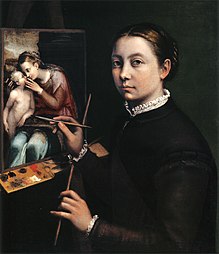During the Middle Ages women were oppressed not treated to the standards that men were treated. This quote explains how women were viewed in society during this time."I do not permit a woman to be a teacher, nor must a woman domineer over a man; she should be quiet” (Chadwick 45). Women were very limited in their rights and it was considered improper for a woman to speak her mind or stand up to a male figure for what she believed in. Many women from rich families were usually married to someone as a political gesture or because it was an advantage to the girl's family. In many cases the women had no say in who she married. As soon as the women were wed their husbands had complete control over them. This was the mentality that troubled our society for centuries and women during that era had very little influence on what went on in society. Women of the Middle Ages had specific roles like caring for the children, to maintain a household, and with any free time, families that were poor had the women working. This made it very hard for women to try and even purse a career in the art world.
Women during this time were not allowed to receive any type of education. Many women would seek education in secret at Monasteries.Women who were born into privileged family were the one's who had the advantage and were able to peruse there dreams in art. But still it was very hard for women to produce anything that would get any recognition because during this time art was a man game. "Most art during this period was produced in monasteries"(Chadwick 44) like Chadwick states. But women were not taken seriously as artist and would not get any recognition for there work. It was a difficult period for women artist but this did not stop them. Even though women's art was being oppressed, women get pushing forward and women were still make huge impacts in the art world.
This painting below by Christine de Pizan is just one of the numerous painting by female artists during the Middle Ages.
"This whole system was, of course, closed to women. In most cities women were barred from painter's guild or academies"(Guerrilla Girls 29). This quote gives us an insight during the Renaissance period of how hard it was for women to establish themselves as artists. Most women during this time were illiterate, could not receive commissions or legally own an atelier. But this did not stop women from achieving there dreams as artists. One female artist and " a rare exception to this was Sofonisba Anguissola, a noble whose father believed women should be educated. He sent one of her drawings to Michelangelo"(Guerrilla Girls 29). In this time period, often times women would have "to be born into a family of artists that needed assistance in the family workshop"(Guerrilla Girls 29). An example of this was Lavinia Fontana who worked in her father's studio in Bologna. Fontana became so established as a painter, she was asked by the Pope to come visit Rome.
Below is a a self Portrait Sofonisba Anguissola and her painting. She portray's her self not as typical women in a dress. Anguissola painter her self in her natural habit which was painting. This was a huge strive for women artist because she was going against what was socially acceptable at the time. This proved not only that she was an amazing painter but the art was now a women's game also.
On the other hand not all women had an easy time establishing themselves as artist. Not all women had a man to support them or came from wealthy families. Properiza de Rosi, "the only known Renaissance women to have sculpted in Marble"(Guerrilla Girls 31). She became so established she was asked to sculpt sculptures made of marble for the church of San Petronio in Bologna. Properiza de Rosi did this with no man providing care for her. Also during this time men were not happy the women were establishing themselves as artists. In one case Elisabetta Sirani, an accomplished painter from Bologenese, " was accused of signing work her father had done"(Guerrilla Girls 30). But Sirani was able to disproved this theory by painting in public. Women during this time were starting to gain some ground and recognition in the art world.
Despite the influence of a male dominate society females still managed to create their own genre sending a dominate message to the male dominant society. Women were fighting back and proving that the art was not just a man's game but a women's also.Women's art started to thrive from the time of the Middle Ages to the Era of the Renaissance and more women were becoming to establish themselves. But despite women obtaining more freedoms since the Middle Ages, on an a social-economic scale women were still not treated to the standers of men. Women influence art and society in so many ways and it is shame that historians leave this out of the history and "fight over who was the greatest artist of each era, as though there was an aesthetic Olympics where only winners count. Everyone assumes that art in the Renaissance was an all guys' an all guys game "(Guerrilla Girls 29). But that just is not true!
Works Cited
Chadwick, Whitney. Women, Art, and Society. 4th. New York: Thames & Hudson, 2007. Print.
The Guerrilla Girls. The Guerrilla Girls' Bedside Companion To The History of Western Art. New York: Penguin Books, 1998. Print. 

No comments:
Post a Comment